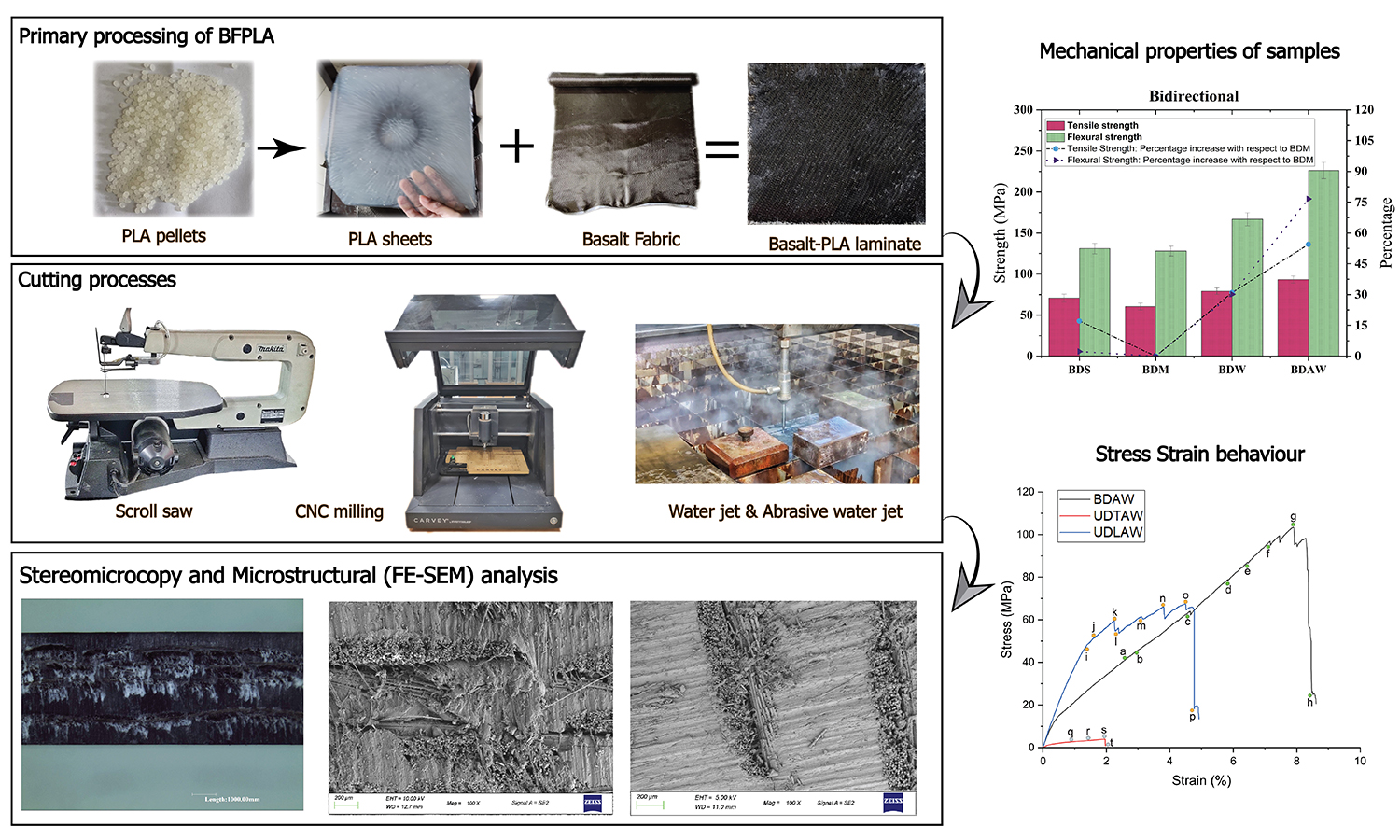Comparative assessment of cutting processes in the mechanical behavior of basalt fiber/poly(lactic acid) matrix composites
Vol. 17., No.2., Pages 152-168, 2023
DOI: 10.3144/expresspolymlett.2023.11
DOI: 10.3144/expresspolymlett.2023.11
GRAPHICAL ABSTRACT

ABSTRACT
To be used in semi-structural applications, the components of sustainable composites must have good mechanical properties and excellent dimensional/geometrical integrity, both of which are influenced by secondary processing techniques. Less emphasis has been placed on the development, mechanical/microstructural characterization, and secondary processing of sustainable basalt fiber/poly(lactic acid) composites (BFPLA), which can be an excellent choice for semi-structural applications. The present investigation aims to determine the best cutting process to create samples from BFPLA, as well as to experimentally evaluate the effect of different cutting processes (scroll sawing, computer numerical control (CNC) milling, water jet cutting, and abrasive water jet cutting (AWJ)) on the tensile and flexural properties of samples. Stereomicroscopy and field-emission scanning electron microscope (FE-SEM) are used to assess and correlate the influence of surface defects caused by cutting methods with mechanical behavior. AWJ machining consistently generated uniform surface profiles across all specimens, with minimum thermal degradation and fiber roll-out. Compared to the tensile strength values of unidirectional longitudinal, transversal, and bidirectional samples cut using milling, AWJ specimens exhibited a percentage increase of 27.9, 70.2, and 54.4%, respectively. It has been concluded that the choice of cutting technique has a significant impact on the strength of cut samples.




